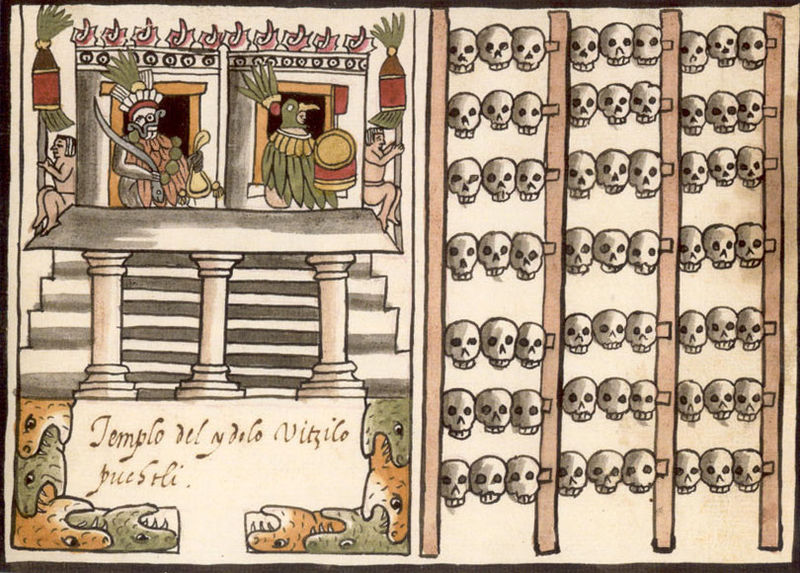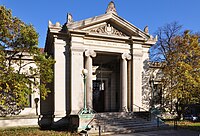Rikcha:Tzompantli Tovar.jpeg

Kay ñawpaq qhawariypa chhikan kaynin: 800 × 573 iñu. Huk huyakukuna: 320 × 229 iñu | 640 × 458 iñu | 810 × 580 iñu.
Qallariy willañiqi (810 × 580 iñu; willañiqip chhikan kaynin: 184 kB; MIME laya: image/jpeg)
Willañiqip wiñay kawsaynin
P'unchaw/pacha nisqapi ñit'iy chaypacha willañiqi kachkasqata qhawanaykipaq.
| P'unchaw/Pacha | Uchuylla rikchacha | Chhikanyachikuqkuna | Ruraq | Willapuy | |
|---|---|---|---|---|---|
| kunan | 02:57 6 ukt 2005 |  | 810 × 580 (184 kB) | CJLL Wright | depiction of a tzompantli, from the 1587 Aztec manuscript, the Codex Tovar. |
Maypim willañiqita llamk'achinku
Kay rikchamanqa kay qatiq p'anqam t'inkimun:
Mayqin wikikunapi willañiqita llamk'achinku
Kay wakin wikikunam willañiqitaqa llamk'achinku:
- ar.wikipedia.org-pi kaykunapi llamk'achinku
- ast.wikipedia.org-pi kaykunapi llamk'achinku
- bg.wikipedia.org-pi kaykunapi llamk'achinku
- bs.wikipedia.org-pi kaykunapi llamk'achinku
- ca.wikipedia.org-pi kaykunapi llamk'achinku
- da.wikipedia.org-pi kaykunapi llamk'achinku
- de.wikipedia.org-pi kaykunapi llamk'achinku
- el.wikipedia.org-pi kaykunapi llamk'achinku
- en.wikipedia.org-pi kaykunapi llamk'achinku
- es.wikipedia.org-pi kaykunapi llamk'achinku
- eu.wikipedia.org-pi kaykunapi llamk'achinku
- fr.wikipedia.org-pi kaykunapi llamk'achinku
- he.wikipedia.org-pi kaykunapi llamk'achinku
- hi.wikipedia.org-pi kaykunapi llamk'achinku
- it.wikipedia.org-pi kaykunapi llamk'achinku
- ko.wikipedia.org-pi kaykunapi llamk'achinku
- no.wikipedia.org-pi kaykunapi llamk'achinku
- oc.wikipedia.org-pi kaykunapi llamk'achinku
- pl.wikipedia.org-pi kaykunapi llamk'achinku
Qhaway mayqin wikikunapim willañiqita llamk'achinku.

